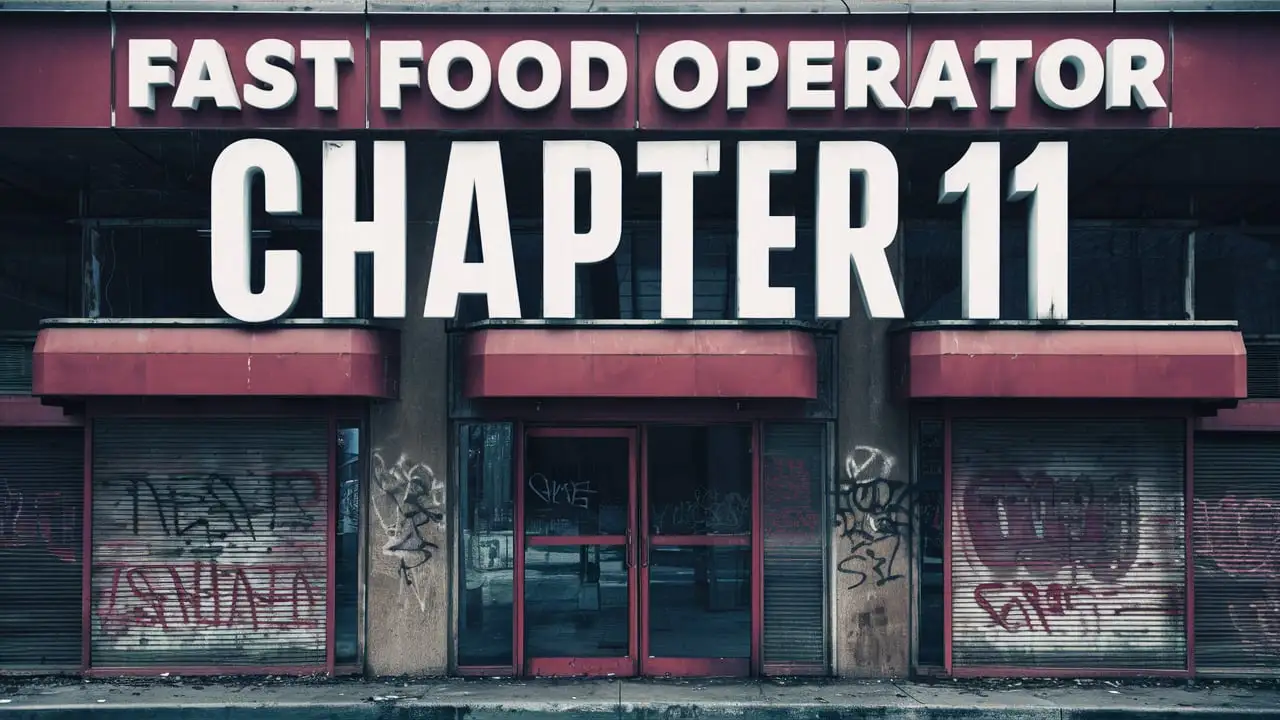Financial stability can sometimes be as fleeting as a lunchtime rush in the competitive fast-food world. The news of a fast food operator’s Chapter 11 filing has recently sent shockwaves through the industry. This article uncovers the shocking details behind the bankruptcy and explores the implications for the business and its stakeholders.
What is Chapter 11 Bankruptcy?
Understanding Chapter 11
Chapter 11 bankruptcy, often called reorganization bankruptcy, allows a company to restructure its debts while continuing to operate. Unlike Chapter 7, which involves liquidation, Chapter 11 provides a way for businesses to stay afloat while they work out a plan to pay off creditors.
Key Features of Chapter 11
- Debtor in Possession: The company remains in control of its assets.
- Automatic Stay: Stops all collections and lawsuits against the company.
- Reorganization Plan: A plan to repay creditors over time while keeping the business running.
The Fast Food Operator in Trouble
Background of the Company
Chapter 11, the fast food operator in question, has been a staple in the industry for decades. Known for its quick service and popular menu items, the company has faced mounting financial pressures recently.
Company Highlights
- Established Brand: Long-standing reputation in the fast food market.
- Broad Reach: Numerous locations across the country.
- Popular Menu Items: Known for its signature dishes that attract loyal customers.
Financial Struggles
Despite its popularity, the company has struggled financially. Rising operational costs, increased competition, and changing consumer preferences contributed to its economic woes.
Key Financial Issues
- High Debt Levels: Significant debt accumulation over the years.
- Decreased Sales: Declining revenues due to market competition.
- Operational Costs: Increased costs for labor, ingredients, and maintenance.
Reasons Behind the Chapter 11 Filing
Impact of the Pandemic
The COVID-19 pandemic has been a major blow to many businesses, and the fast food industry is no exception. For this fast food operator Chapter 11 filing, the pandemic exacerbated existing financial issues, leading to severe cash flow problems.
Pandemic Challenges
- Reduced Foot Traffic: Lockdowns and social distancing measures decreased customer visits.
- Supply Chain Disruptions: Difficulties in obtaining ingredients and supplies.
- Increased Health Regulations: Additional costs for compliance with health and safety guidelines.
Mismanagement and Strategic Errors
Mismanagement and poor strategic decisions also played a role. Overexpansion, poor marketing strategies, and failure to adapt to market trends contributed to the financial decline.
Strategic Mistakes
- Overexpansion: Opening too many locations without sustainable growth.
- Marketing Failures: Ineffective advertising campaigns and promotions.
- Ignoring Trends: Failure to adapt to health-conscious and tech-savvy consumer trends.
The Bankruptcy Process
Filing for Chapter 11
The process began with the company filing for Chapter 11 bankruptcy, which included submitting detailed financial statements and a proposed reorganization plan.
Initial Steps
- Filing the Petition: Officially declare bankruptcy and start the process.
- Court Involvement: The court oversees the process and ensures fair treatment of creditors.
- Creditor Meetings: Negotiations with creditors to agree on the repayment plan.
Developing a Reorganization Plan
A crucial part of Chapter 11 is developing a reorganization plan that outlines how the company will repay its debts and return to profitability.
Components of the Plan
- Debt Restructuring: Negotiating new terms for debt repayment.
- Operational Changes: Implementing cost-cutting measures and efficiency improvements.
- Asset Sales: Selling off non-essential assets to raise capital.
Stakeholder Reactions
The bankruptcy filing has affected various stakeholders, including employees, suppliers, creditors, and customers.
Stakeholder Impact
- Employees: Job security concerns and potential layoffs.
- Suppliers: Uncertainty about payments and future contracts.
- Creditors: Potential losses and renegotiated payment terms.
- Customers: Concerns about the continuity of service and product availability.
Future Outlook
Potential Recovery
While the fast food operator’s Chapter 11 filing is a significant setback, there is potential for recovery. A successful reorganization could lead to a leaner, more efficient company.
Recovery Strategies
- Streamlining Operations: Reducing costs and improving efficiency.
- Market Adaptation: Embracing market trends and consumer preferences.
- Strengthening the Brand: Enhancing marketing efforts and customer engagement.
Industry Implications
This bankruptcy highlights broader trends in the fast food industry, such as the need for adaptability and financial prudence.
Lessons for the Industry
- Adaptability: The importance of adapting to changing market conditions.
- Financial Management: The need for prudent financial planning and management.
- Customer Focus: The value of staying attuned to consumer preferences and trends.
Also Read: Where Do I Eat? Discover Hidden Gems That Will Blow Your Mind
Final Thoughts
The fast food operator’s Chapter 11 bankruptcy reminds businesses of the challenges in a competitive and rapidly changing market. Understanding the factors that led to this situation can provide valuable lessons for other companies in the industry.
While the road to recovery may be extended and challenging, the potential for a turnaround exists. By learning from past mistakes and implementing effective strategies, the company hopesemerge more robust and resilient. The story of this fast food operator serves as a cautionary tale and an opportunity for growth and improvement in the industry.

